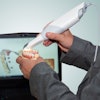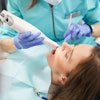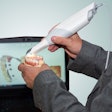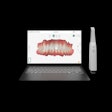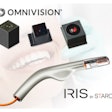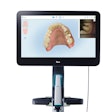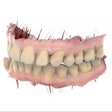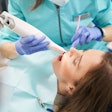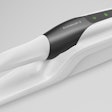
Using intraoral scanners for digital impressions is an integral part of any CAD/CAM process. But what is the best strategy for scanning a patient's mouth, and does it differ by type of scanner? Researchers wanted to find out.
They scanned a model four different ways using four different scanners to determine the best technique. For three of the scanners tested, the researchers found that the scanning strategy did not affect the accuracy of the scan. Their study was published on September 13 in PLOS One.
"By using four different strategies with each of the scanners and comparing the accuracy data among them, it is possible to understand whether or not it is really important to follow a scanning sequence according to the digital impression system used," wrote study co-author Priscilla Medina-Sotomayor, a professor at the Catholic University of Cuenca School of Dentistry in Azogues, Ecuador, and her colleagues from the department of dentistry at the University of Valencia in Spain.
Scanning accuracy
Since the introduction of the first scanner for digital impressions in the 1980s, numerous companies have developed in-office scanners that capture 3D images for creating restorations. But what is the scanning strategy with the greatest accuracy in terms of trueness and precision of four intraoral scanners in the impression of a complete dental arch?
To find out, the researchers applied four different scanning strategies 10 times each on a complete maxillary arch cast inside a black methacrylate box:
- The "exterior-interior" strategy started with the left second molar and then to the right second molar, returning via the vestibular surfaces and finally a sweep over the palatal surfaces.
- The "quadrants" strategy started with the right central incisor and then to the right second molar, returning via the vestibular surfaces, and then the palatal surfaces. The second scan began with the left central incisor to the left second molar, returning via the vestibular surfaces and then the palatal surfaces.
- The "sextants" strategy began with the right second molar and then to the right first premolar, returning via the vestibular and the palatal surfaces. The second scan started with the right canine to the left canine, returning via the vestibular surfaces and then the palatal surfaces. A third scan started with the left first premolar until the left second molar, returning via the vestibular surfaces and then the palatal surfaces.
- The "sequential" strategy involved scanning of the three surfaces of each tooth (occlusal, vestibular, and palatal), performing an "S"-shaped movement from the right second molar in all directions without returning to the starting point.
The researchers always started the process with occlusal surfaces as references while taking the impression, and they performed a final sweep to fill the spaces that did not have digital information, generally the interproximal spaces. They also took a reference scan.
“The accuracy, in terms of trueness and precision, of the iTero scanner depends on the strategy used when recording intraoral impression in long-span impressions.”
The four intraoral scanners came from four different manufacturers:
- iTero intraoral scanner (Align Technology)
- Trios intraoral scanner (3Shape)
- Omnicam intraoral scanner (Dentsply Sirona)
- True Definition intraoral scanner (3M)
The researchers then compared all the files by using software to superimpose the scans on the reference model to calculate the total 3D deviations between the datasets (trueness and precision) and differentiating each of the scanning strategies during the comparison. Trueness is the difference between the measurement values of the reference model and test models. Precision is the repeatability of the scans between the scanners being tested (a lower number is better).
For trueness, the Trios and iTero systems showed better results with the sequential scanning strategy, the Omnicam scanner had better results with the quadrants strategy, and the True Definition scanner had better results with the sextants strategy, the researchers reported.
In terms of precision, they found significant differences among the scanning strategies (p < 0.05) with the iTero scanner but not with the other scanners (p > 0.05). The best results for the iTero and True Definition scanners came with the sequential strategy, while the Trios scanner showed best results with the exterior-interior one. The Omnicam scanner's precision was highest with the quadrants strategy (see table below).
| Performance of intraoral scanners in µm by strategy | ||||
| Strategy | iTero | Omnicam | Trios | True Definition |
| Interior-exterior | 269.84 | 260.12 | 184.51 | 109.83 |
| Quadrants | 272.21 | 243.68 | 194.53 | 111.78 |
| Sextants | 248.04 | 259.52 | 193.28 | 90.79 |
| Sequential | 197.16 | 283.73 | 205.79 | 82.83 |
Strategic use
In terms of study limitations, the authors noted that the study was conducted in vitro.
They summarized the results by concluding that practitioners who use the Trios, Omnicam, or True Definition scanners are able to record accurate 3D images of the scanned object with any of the strategies used.
"The clinician is able to obtain equally satisfactory results, regardless of the clinical difficulty encountered, and is able to scan the dental structures following any scanning strategy, adapting it to the specific situation," the study authors wrote.
They also had a specific recommendation for the iTero scanner.
"The accuracy, in terms of trueness and precision, of the iTero scanner depends on the strategy used when recording intraoral impression in long-span impressions; the sequential strategy is best for such impressions," they wrote.
